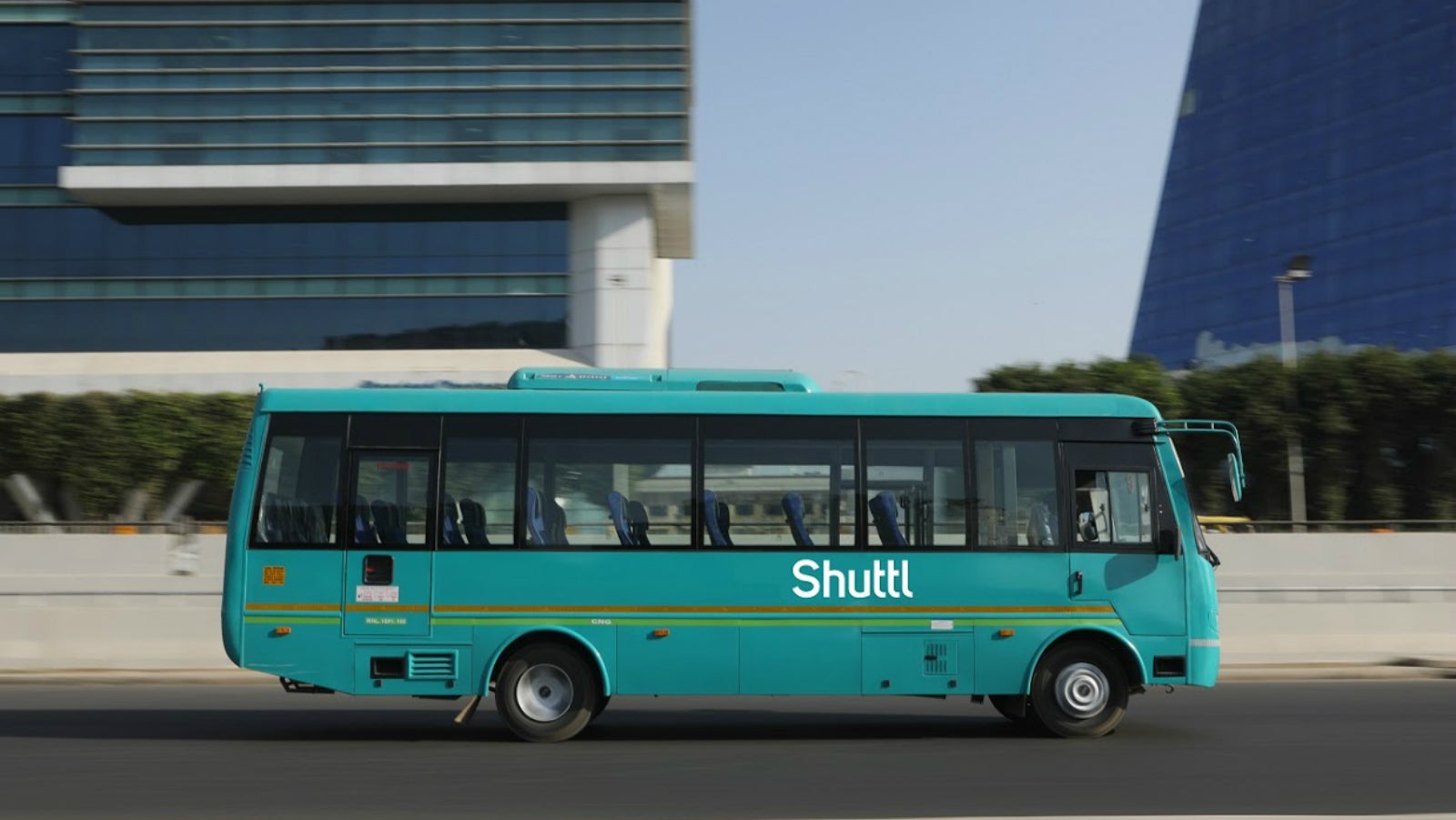In a city with 10 million cars, two IIT grads are helping commuters leave their vehicles at home
Over the past few years, the Delhi government has tried almost everything to bring down the number of cars in the city.


Over the past few years, the Delhi government has tried almost everything to bring down the number of cars in the city.
From building more crossings for bicycles and improving public transport to regulating the use of private cars, it has tried to combat the Indian capital’s reputation as one of the world’s most polluted cities. Unfortunately, it hasn’t been very successful.
Now, a two-year-old startup, Shuttl, is trying to fix this condition.
“If you look at Delhi, the general trend has been to solve the problem from a supply side,” Amit Singh, co-founder of Gurugram-based Shuttl, told Quartz. “As cars go up, we try to build more roads and flyovers. But what is equally important is to solve the problem from a demand side. And that is by means of encouraging people to use less cars or opt for public transport.”
Delhi is home to the largest number of vehicles among Indian cities, with nearly 10 million registered as of December 2016. Though metro operations began way back in 2003, the peak-hour commute remains nightmarish, while taxis are expensive. In 2016, commuters using private vehicles spent an average of 3.43 hours each day on the road during peak hours, up from 1.36 hours in 2011, the Hindustan Times newspaper reported. Exhaust fumes from these vehicles account for up to 20% of the city’s level of PM 2.5—tiny particulate matter that damages human health.
Obviously, Shuttl’s challenges are huge. But the company is also clear about what must be done.
“In India, if you see, solutions for (the) daily commute are either overpriced or overcrowded. Passengers simply want to go to office without the stress and quite comfortably. What we are trying to do is offer a comfortable seat for a journey, for which the passengers won’t need to take their own vehicles,” Singh added.
The company now runs 450 air-conditioned buses that ply along 75 routes connecting areas across Delhi. It offers some 20,000 rides a day from 300 pick-up points. Passengers must book seats on the company’s app, paying between Rs50 (80 cents) and Rs80 ($1.2), depending on the route. There are also daily and monthly plans, priced between Rs250 ($3.8) and Rs2,000 ($31).
And all this has resonated with customers: Seats are often sold out 24 hours in advance, thanks to the large client base Shuttl has already built.
E-commerce to infrastructure
The story of Shuttl begins in March 2014 at the office of e-commerce company Jabong where both Singh and Shuttl co-founder Deepanshu Malviya worked back then.
Once they caught the entrepreneurship bug, Singh and Malviya, graduates from the prestigious Indian Institute of Technology, Delhi and Kanpur, quit Jabong and dabbled unsuccessfully in mobile content for around nine months. Their second venture, an app for inter-city cabs, didn’t quite take off either.
Then, Singh and Malviya, trained in civil and metallurgical engineering, respectively, noticed an opportunity amidst Delhi’s severe transportation crisis.
In April 2015, they launched Shuttl, hiring four more former Jabong employees. At the time, they were ahead of the curve: Taxi hailing giants Uber and Ola had not begun offering their now-popular shared services.
Starting out with two rented Toyota Innovas, the team first created a basic app. It then visited key bus stops in Gurugram, persuading travellers to try out the Shuttl service. Starting with just two commuters, Shuttl quickly grew to 100 rides a day within two weeks, encouraging it to shift to buses.
By the end of the month, Shuttl had signed a term sheet with Sequoia capital, gaining an investment of $3 million. A few months later, its second round of funding of $20 million was led by Sequoia and Lightspeed Venture Partners.
Today, the company operates hired mini-buses that can seat between 20 and 40 people. It targets those who travel to work nearly 20 times a month, mostly in their own cars.
“If 40 people are using the bus, that means as many vehicles are likely to go off the road,” said Ishan Chanda, an urban transport planner at the New Delhi-based Institute of Urban Transport. “That’s good news, since it will reduce congestion and pollution.”
But it hasn’t been an entirely smooth ride for Shuttl.
Road blocks
Today, Shuttl’s Facebook page has a number of queries and complaints of delayed arrivals, hardly a good thing for an app. And, while Singh says that happy customers outnumber the unhappy ones, competition is rising.
Last year, Ola, India’s largest taxi hailing app, launched its own minibus service named Ola Shuttle. Other startups, too, have jumped. For instance, there is Mumbai-based Cityflo, which received $750,000 (Rs4.9 crore) in seed funding from investors such as IDG Ventures in 2015. Mumbai-based rBus, too, raised an undisclosed amount in seed funding from India Quotient, People Group founder Anupam Mittal, and other investors in 2015.
Singh isn’t worried, though. He believes his company is far ahead of the competition because of its singular focus.
“Shuttl is our bread and butter. We are not trying to solve 10 different problems, but we are here to focus on solving the one problem we set out to,” he said. “It’s a model that could be replicated, but it’s not as easy as it looks.”
By next March, Shuttl wants to double the number of rides it offers in Delhi, testing and developing the right model before it considers expanding to other cities.